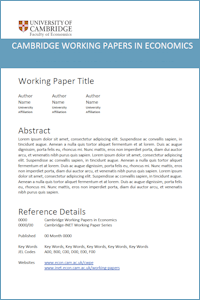
Simshauser, P.
On Static vs. Dynamic Line Ratings in Renewable Energy Zones
CWPE2362
Abstract: Scaling-up Variable Renewable Energy will face critical bottlenecks vis-a-vis requisite transmission hosting capacity. Network developments must navigate the complexity of encroaching on private land, risk disturbing sites of cultural significance, compete with other environmental (i.e. biodiversity) objectives, and endure backlash from directly affected communities. Transmission is costly and post-pandemic supply-chain constraints are sending equipment costs higher. Given time and cost risks, existing transmission networks and successful augmentations need to function at their outer operating envelope. In this article, a Renewable Energy Zone (REZ) is examined by comparing static and real-time dynamic line ratings. Historically, static line ratings in the Queensland region of Australia’s National Electricity Market reflected the still, hot conditions that characterised critical event maximum demand days. Widespread take-up rates of rooftop solar PV has shifted maximum (grid-supplied) demand to the late-afternoon when wind speeds are rising, which also provides thermal cooling to transmission lines. Optimisation modelling suggests a shift from static to dynamic line ratings for a reference 275kV radial REZ in Queensland can increase wind hosting capacity from ~1700MW to more than 2800MW with limited change in the asset base. Dynamically adjusting Frequency Control Ancillary Services further increases VRE hosting capacity.
Keywords: Renewable Energy Zones, Dynamic Line ratings, Frequency Control Ancillary Services, Variable Renewable Energy
JEL Codes: D52 D53 G12 L94 Q40
PDF: https://www.econ.cam.ac.uk/research-files/repec/cam/pdf/cwpe2362.pdf 
EPRG Paper Link: 2321
Open Access Link: https://doi.org/10.17863/CAM.105491
